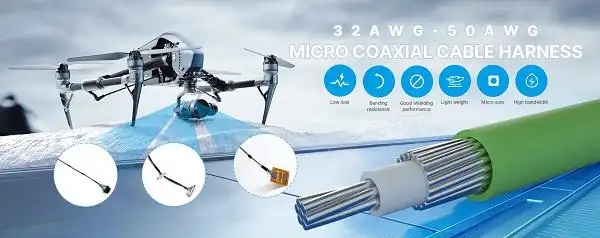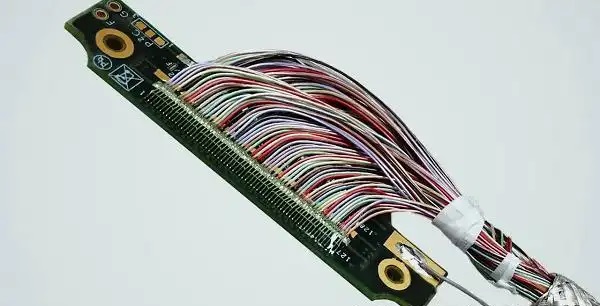Micro coaxial cables, with their advantages such as strong flexibility, small size, and stable signal transmission, are widely used in high-precision electronic products such as smartphones, notebook cameras, drones, medical equipment, and in-car imaging. However, during the production and assembly process, issues such as cables not conducting can occur, directly affecting product performance and yield. Below, we will systematically analyze the 5 typical reasons for the non-conducting of micro coaxial cables, helping you quickly identify the problem and improve processing reliability.

Welding defects such as cold welds and open joints
Problem Description:
The diameter of extremely fine coaxial cables is usually only 0.3mm to 0.8mm, and the precision of welding operations is extremely high. If there is a false weld, insufficient solder, or open circuit, it is easy to cause the circuit to be out of order or poor contact.
Solution:
Use a microscope to assist in welding operations and match the appropriate solder wire with the soldering iron tip.
• After welding, it is necessary to carry out visual inspection and conduction test to confirm.
Use a dedicated soldering flux to enhance the reliability and wettability of the solder joints.

The shielding layer is not completely stripped.
Problem Description:
The inner part of the extremely thin coaxial cable contains a metal woven mesh or copper foil shielding layer. If the stripping is not clean, the residual shielding wires may come into contact with the core or solder points, causing a short circuit or failure to conduct.
Solution:
Use a dedicated peeling knife for delicate peeling operations.
Peel off the skin and examine it with a magnifying glass or microscope to ensure there are no remaining shielding wires.
Suggest combining with an automatic stripping machine or laser peeling equipment to improve stability and yield.

Cable core breakage
Problem Description:
The internal conductor of the extremely thin coaxial cable is very thin. If the operation is not handled properly during stripping, bending, or pulling, it is very easy to cause the conductor to break. The appearance may be intact, but the internal structure has been damaged.
Solution:
Control the tension and pressure parameters of the stripping equipment to prevent the conductor from being pulled apart.
Before welding, check the conductor for any scratches or breaks using a CCD microscope.
Set the minimum bending radius during production to prevent over-bending and core breakage.

Four, excessive tin content or bridging
Problem Description:
The fine coaxial wire焊接间距 is small, and if the soldering amount is not properly controlled, it is prone to solder bridging or short-circuiting, which affects the conductivity.
Solution:
Strictly control the amount of solder used, and recommend using fine solder wire with a diameter of 0.2mm to 0.3mm.
Adopt high-precision Haba machine or manual precision welding technology.
After welding, perform a short-circuit test to ensure that the weld points are independent and reliable.

Five, terminal or pad oxidation
Description of the problem:
When pads or terminals are exposed to the air for a long time, an oxide layer will form, leading to poor welding or poor conductivity, affecting signal stability.
Solution:
Clean the wire ends and pads with anhydrous alcohol or oxygen scavenger before welding.
Use lead-free environmental-friendly flux to improve wetting properties of welding.
Strengthen storage management, maintain a dry and sealed storage environment.

Extremely thin coaxial cable bundles are small in size, but they require extremely high standards of craftsmanship. The above five issues are common causes of poor conductivity in the production of smart phones, vehicle electronics, drones, medical equipment, and other manufacturers. Only by achieving refinement and controllability at each process link can the true transmission performance and consistency of the product be truly guaranteed.
We have been focusing on the design and customization of high-speed cable harnesses and ultra-fine coaxial cable harnesses for a long time, committed to providing stable and reliable high-speed interconnect solutions. If you have any related needs or want to learn more, please contact: Manager Yin.
18913280527 (WeChat number)。





